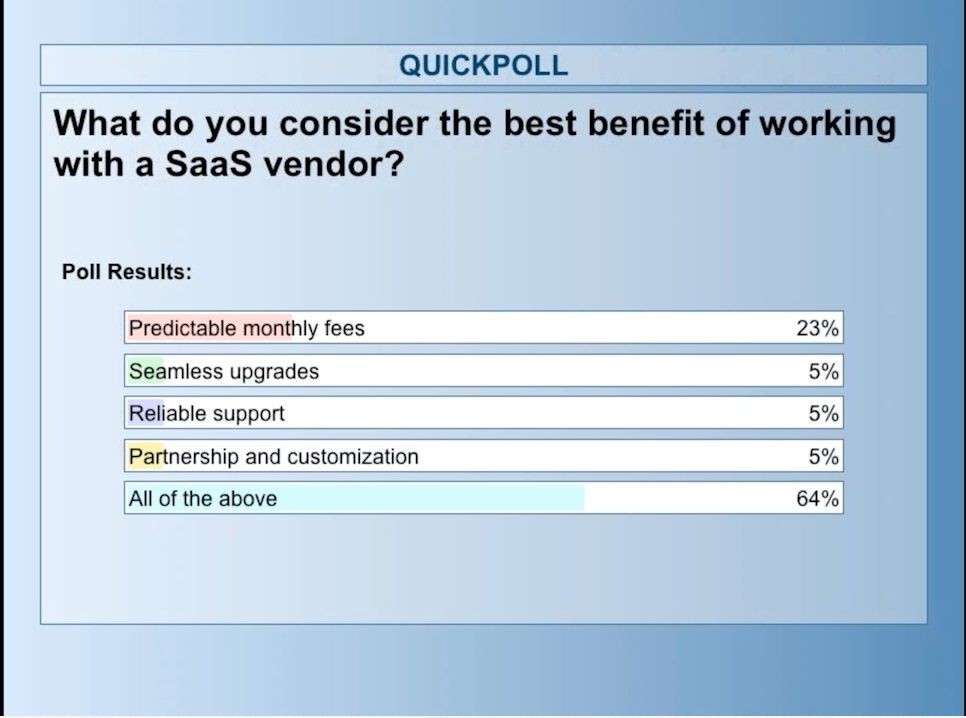“Cloud PACS” & “Deconstructed VNA” – are we even speaking English? Whether you’re already familiar with these terms or not, the question becomes, how can you apply them to your imaging stack and workflow? In a recent thought leadership webinar, Michael Quinn, CTO of Jefferson Radiology, discussed how the regional center of excellence and imaging enterprise, has fulfilled patient-centric initiatives by deconstructing their PACS and moving towards a cloud VNA.
Throughout the discussion, several polls were taken, revealing an interest in imaging stack innovation with the cloud. Read on to learn more.
Poll 1 – Do you have any deconstructed PACS initiatives at your facility?

The majority of respondents have deconstructed their PACS in some way or are thinking of adding it to their strategy. However, 27% are not planning to jump into this project anytime soon. We believe this could be due to confusion over what it means to deconstruct PACS. In fact, Mike Quinn notes that, “The healthcare industry has been very tepid to change – we’ve had to educate many of our partners in our move towards the cloud.” A traditional PACS system was designed as a singular solution from one vendor for all DICOM imaging needs while a deconstructed PACS allows various components of a PACS (archiving, viewing, exchange) to be separated and even provided by different vendors.
Why the reason for the separation? Well, it allows for highly customized workflows and hybrid models that can suit the needs of your individual facility. Deconstructed PACS models frequently integrate DICOM images with non-DICOM reporting data (a goal for Jefferson Radiology), which can lead to the image enablement of systems outside of the PACS like EHR/EMR, patient portals, and referring physician portals.
In addition, a deconstructed PACS allows a facility to select the best viewing system for their needs whether in an OR, urgent care facility, or a teleradiology vendor looking to read on-the-go.
This is where that second term cloud VNA comes into play; a vendor neutral archive allows a facility to deconstruct their PACs as it isn’t based on one strict vendor architecture or strategy. Choosing (and managing) multiple vendors can sometimes be a challenge. Understanding the value of VNA, what to look for, and what to expect from a vendor are important to consider.
Poll 2 : How Would You Best Define VNA?

Although a percentage of respondents agreed with the traditional definition of VNA, a vendor neutral method of storing imaging and operating across PACS, a greater percentage agreed that VNA can also allow for image sharing and viewing. Unlike PACS, which is typically designed to serve one department, the VNA from the get-go was designed to be a long-term archive used to house images from a variety of systems. In a sense, you can think of it as a central repository for images. Jefferson Radiology chose to move towards a cloud VNA because it takes the capabilities of a traditional vendor neutral archive further by providing a flexible framework over the internet in which images can be transferred, viewed, and patient imaging and data can be joined together.
Besides the software improvements offered by the cloud, Jefferson found the services and support offered by cloud vendors, particularly Software-as-a-Service vendors, to be much more cost-effective and to allow for simplified deployment and training.
Poll 3 – What Do You Consider the Best Benefit of Working with a SaaS Vendor?

The majority of respondents agreed that the best benefits of working with a SaaS vendor included predictable monthly fees, seamless no-pain upgrades, reliable support, and customization opportunities. Quinn says, “Those of us in the IT world know just how burdensome upgrades can be – DICOM Grid makes it easy.”
Quinn says, “We estimate over 30% in cost savings since switching from our legacy exchange vendor to DICOM Grid.” In addition, the availability of a singular cloud suite has allowed Jefferson to eliminate 4 previous systems.
In keeping with patient-centric goals, Jefferson has been particularly glad to hear that patients are complementary regarding the quick accessibility and transfer of their medical images. Jefferson’s cloud solution has facilitated the exchange of images to health facilities outside of the immediate area. For example, Quinn noted that “a trauma patient was being transferred from local hospital to a tertiary trauma center, and Jefferson’s cloud exchange easily facilitated the exchange of information prior to the patient’s arrival.”
The cloud-based platform has eliminated the need for VPNs. Images and their associated reports can be shared with any organization in just a few clicks.